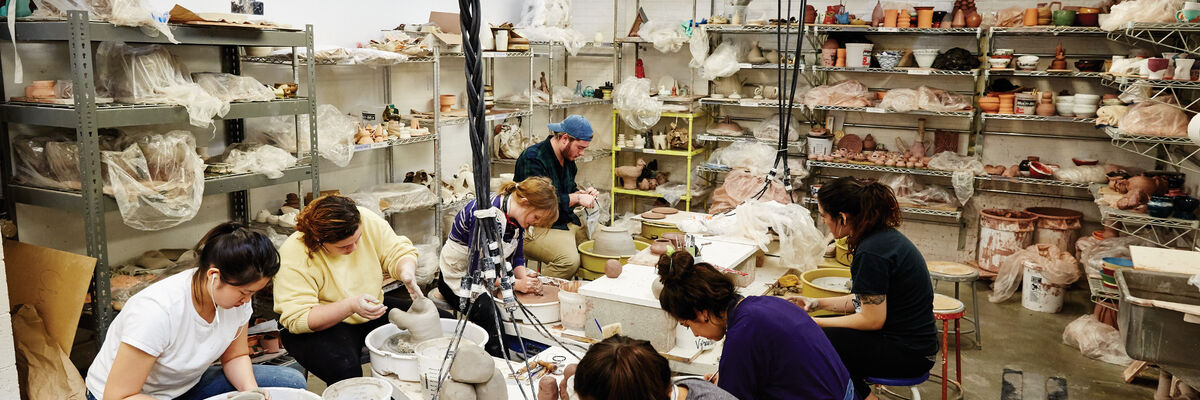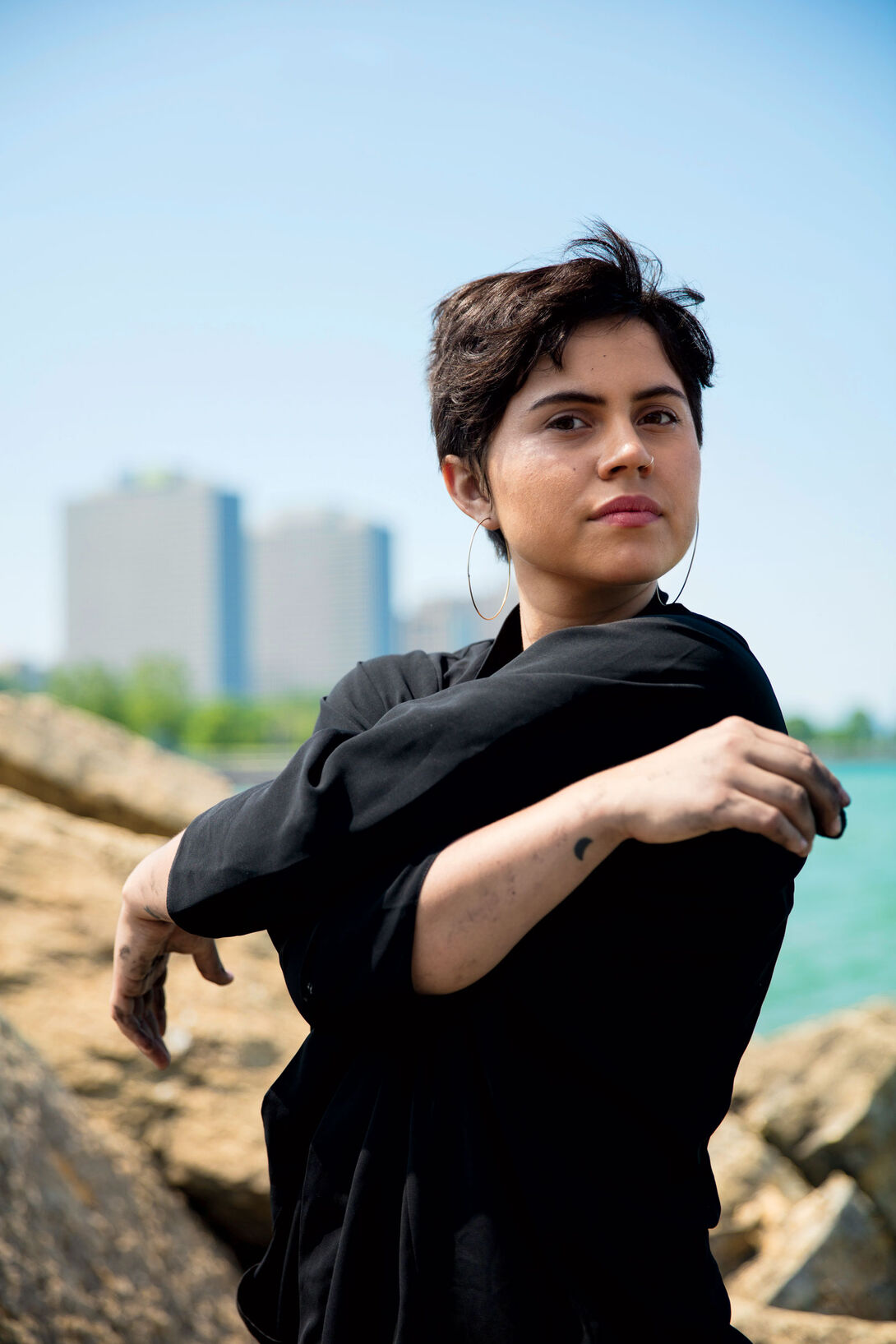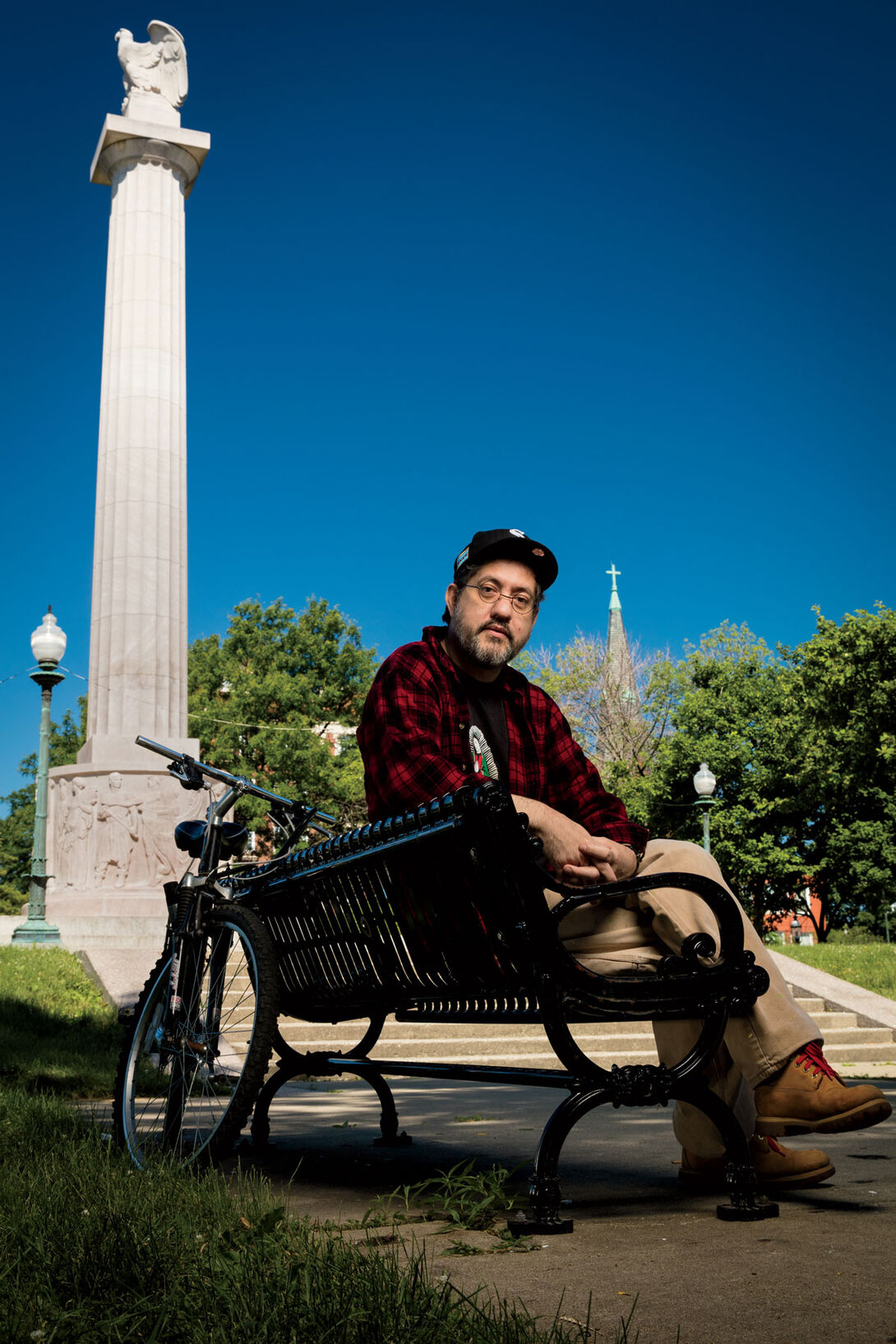
Funding the Future
September 2016
Scholarships put a world-class art and design education within reach for talented students.
by Adrienne Samuels Gibbs

Maria Luisa Conlon is on the move. She’s so busy creating art that she unapologetically goes off the grid for a week at a time—an unusual decision for a 19-yearold in this age of social media. Between working and creating, the SAIC sophomore barely has a moment to sit down. In fact, she conducts this interview while riding her bike. There’s no time to waste.
While riding—between huffs and puffs—she explains her pragmatic approach to her performance art, which uses her body, blood, earth, and water. “One of the many good things about performance is the cost,” says Conlon, who is one of 20 matriculating Walter and Shirley Massey Chicago Scholarship Fund recipients. “I couldn’t be a painter. I can’t afford the paint, so I use my body. It’s free.”
Conlon is an Irish and Mexican woman, and her art is about the ephemeral nature of the social and political truths we use to define ourselves. Her professors have been challenging her to push this concept further—something that would not have been possible without the Massey Scholars program. She says the program helps students like her to realize their full potential.
Conlon’s story echoes that of many students who need scholarships in order to pay for college. And raising money for worthy students is a key component of Beautiful/Work: The Campaign for SAIC. The two-year, $50-million fundraising campaign kicked off at the 150th Anniversary Gala for SAIC last May, which also commemorated the legacy of outgoing President Walter E. Massey and Shirley Massey and toasted the new President Elissa Tenny.
“Our students and faculty challenge ways of thinking, collaborate across disciplines, and make work that pushes the world forward. This campaign ensures that future generations of students have the opportunity to learn from faculty who are leading practitioners in their field in our cutting-edge facilities right in the heart of downtown Chicago,” says Cheryl Jessogne, Vice President for Institutional Advancement at SAIC.

Rose Milkowski, Vice President of Enrollment Management, sees firsthand the difference a scholarship makes when added to a total financial aid package. Her staff in both the Admissions and Student Financial Services offices work together to provide students with the right mix of financial solutions and support. “The reality is that education can change a person’s direction in life,” says Milkowski. “The more scholarships we can get, the more people whose lives will totally be transformed.”
The Walter and Shirley Massey Chicago Scholarship Fund is earmarked for students from Chicago Public Schools (CPS) who, though academically excellent, do not have the means to attend a private institution such as SAIC.
These scholarships have been granted across all races and genders, and sides of the city. The fund has resulted in an increase of applications from CPS graduates. In fact, SAIC has seen an 80 percent increase in applications from CPS students over the course of the last three years. For this past academic year, 87 CPS students were offered admission, yet only 33 enrolled.
Milkowski ensures that money awarded a student for the freshman year—provided the student’s grades remain good—is available each year until graduation.
“I would never give a student financial support their freshman year, and in junior and senior year they can’t financially make it,” she says. “I want to make sure if we award a student $10,000 in their freshman year, that they get the $10,000 their sophomore, junior, and senior year.” That attention to detail is what led Abdullah Quick, 19, to select SAIC over other, competing schools. The Dr. Martin Luther King Jr. College Preparatory High School graduate was already working part time on his own business when he graduated. The scholarship made college a viable option. His high school photography teacher pushed him to consider SAIC and even set him up to take summer classes the year before he graduated from high school. Quick was immediately hooked.
“It’s unbelievably hard, but the experience is worth it,” says Quick. “The past few months have brought many changes to the way I view my art and the world around me. I’ve gotten to experience life outside of the country for the first time on a study trip. I have taken up multiple new media thanks to the interdisciplinary nature of this institution and the encouragement of instructors.”
He goes on.
“If they didn’t have the program like [the Massey Scholars] there would be very few Chicago students like me here.” Milkowski tracks the students who are accepted but ultimately don’t come to the School. Where do they go? Some matriculate through other art and design schools, but those without means tend to fall through the cracks, she says.
“Thirty-six ACT score, 3.7 GPA, really bright, smart kids,” Milkowski says. “The hardest thing I ever had to swallow was when I looked up those 40 students [who didn’t attend SAIC] to see what schools they attend. A few of them had gone to college, but there was a good quarter of them that didn’t go anywhere. This is a super smart kid and an incredibly talented artist, and yet there’s only so much scholarship we can give.”

Beautiful/Work: The Campaign for SAIC has already brought in more than $40 million of its goal, with $1.2 million raised to support the Walter and Shirley Massey Chicago Scholarship Fund at the spring gala alone. Campaign donations also support graduate students. Leadership gifts such as the Mencoff Family Fellowship in Historic Preservation, HOLLY HUNT/Knoll Inc. Graduate Merit Fellowship, Ellen Sandor Scholarships, and the Pritzker Graduate Fellowship Fund help the School maintain its top four ranking with U.S. News and World Report for graduate programs by attracting some of the most talented students.
Abel Berumen, 50, just completed his Master of Fine Arts, focusing in painting after working for 20 years in New York as a successful fashion photographer. The $4,000 LeRoy Neiman Scholarship was initially created by alumni LeRoy and Janet Neiman in 2005.
“It’s a two-year program, so it’s pretty much full time,” says Berumen, who grew up in the Logan Square neighborhood of Chicago. “You would figure that it would be so much easier for us, especially low income students. And it’s the opposite. I needed the money, so I would be taking five classes and [assistant teaching] three classes. I guess someone saw that. I got a letter saying ‘congratulations,’ and I was surprised.”
Berumen is now moving into painting, and plans to continue to take clients as a photographer once the summer is over. And when he makes it big, he definitely plans to give back. “Oh yeah,” says Berumen, noting that Neiman is an alum and former faculty member who gave back. “I mean, once I get money. For sure.”
